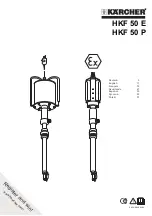
4-1
Section 4. Programming the SDM-SIO4
This section gives both the basic commands and advanced command line options which allow
testing and advanced configuration of the SDM-SIO4.
4.1 Command Line Operation and Structure
To use the command line mode, connect a computer to port 1 of the SDM-SIO4.
The computer should run a terminal emulation program (e.g. GraphTerm) which
is set to 9600 baud, 8 data bits and 1 stop bit. If connecting to a PC you will need
a null modem cable.
When the computer is connected, the command line can be made active by
pressing the small momentary push-button switch, next to the Status LED. When
this happens the SDM-SIO4 prompt (
SDMSIO4->
) is sent out of port 1. At this
prompt a number of commands can be typed and executed.
•
The command line buffer is 512 bytes long so no command with parameters
must be longer than this.
•
After ten minutes of inactivity (where no valid commands are executed) the
command line mode will time out and port 1 will return to its normal function.
•
The command line mode can be activated while the datalogger is running a
program which communicates with the SDM-SIO4.
However, all datalogger
activity related to port 1 is ignored.
•
Complicated or long string definitions are best set up by editing a text file
which includes the string definition commands. This file can then be sent out
to the SDM-SIO4 once it is configured in the command line mode. The
SDM-SIO4 can accept multiple configuration strings sent within one file.
By using (datalogger) Instruction P113 Command 321 it is possible
to execute a command line command from a datalogger program.
See Section 5 of this manual for further details.
4.2 Entering Commands
A command is executed when a carriage return (
CR
) is sent. This is normally sent
by pressing the
ENTER
key on a computer. The method of entering control
characters was discussed in Section 3.1, but is repeated here for convenience.
To enter a control character in the range of 0-255 decimal in a filter string,
formatter string or a user string you must use the ‘&hh’ format, where ‘&’ defines
the following two characters, ‘hh’, to be a hexadecimal number between 00 and
FF. For example, ‘&de’ would be character 222 decimal. To use ‘&’ within the
string you must type ‘&&’ (i.e. && = & when in a string).
The hex. number must always be two ASCII characters.
NOTE
NOTE
















































